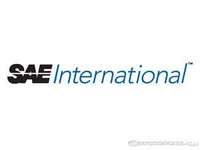SAE International Offers New Edition of Best-Selling Vehicle Accident Reconstruction Book
 |
WARRENDALE, PA--Nov. 22, 2011: Vehicle Accident Analysis and Reconstruction Methods, the new edition of the popular 2005 book published by SAE International, provides an updated and expanded exploration of accident analysis and reconstruction. From frontal collisions to rollover accidents, this book serves reconstruction specialists, those involved in handling accidents, and automotive engineers involved in creating safer vehicles to provide further insight into how, when, and why accidents occur. It also serves as a reference tool for engineers involved in litigation, forensic investigators, engineers that specialize in automotive safety, and crash reconstructionists. Police officers, attorneys, and insurance professionals will also find the book to be a definitive resource in reconstructing accident scenes.
Accident reconstruction is a field that increasingly relies on science, mathematics, and engineering, and centers on the physics behind automobile crashes. It is especially helpful in the insurance industry with claims and during litigation because it helps reconstruct what happened during an accident as well as how it was caused. Also, it is becoming more prevalent in helping automotive engineers design safer vehicles.
This new edition offers an expanded glossary of automotive terms, and a bibliography at the end of the book providing further reading suggestions making this an essential resource reference for engineers involved in litigation, forensic investigation, automotive safety, and crash reconstruction.
Designed for the experienced practitioner, this new book aims to help reconstruction specialists with problems they may encounter in everyday analysis. Authors Raymond M. Brach and Matthew Brach demonstrate how to take the physics behind accidents out of the idealized world and into practical situations. Real-world examples are used to illustrate the methods, clarify important concepts, and provide practical applications to those working in the field. In addition, this revised edition includes new material covering event data recorders (EDRs), frictional drag coefficients for sliding tires, railroad collisions, and new practical applications of mathematical methods. It also provides chapters on the same topics (though improved) as the first edition including tire forces in straight line and lateral motions, rollover accidents, crush energy, pedestrian collisions, dynamic simulations, to name just a few.
Raymond Brach, Ph.D., PE, is a consultant in the field of accident reconstruction and a professor emeritus of the Department of Aerospace and Mechanical Engineering, University of Notre Dame. He is a Fellow of SAE International, as well as a member of the American Society of Mechanical Engineers, the Acoustical Society of America, the Institution of Noise Control Engineers, and the National Association of Professional Accident Reconstruction Specialists. His specialized areas of teaching and research include mechanical design, mechanics, vibrations, acoustics, applications of statistics and quality control, vehicle dynamics, accident reconstruction, and microparticle dynamics.
Matthew Brach, Ph.D., PE, is an engineering consultant with the firm Brach Engineering, LLC. His principal areas of professional activities include vehicle impact analysis, vehicle dynamics, and automotive accident reconstruction. He is a member of SAE International, the American Society of Mechanical Engineers, the Institute of Electrical and Electronics Engineers, and the National Association of Professional Accident Reconstruction Specialists. He is the author of technical papers covering a range of topics that includes nonlinear vibrations, automotive engine mount design, vehicular accident analysis methodologies, and tire forces.
New topics include:
- Event data recorders (EDRs)
- Frictional drag coefficients for sliding tires
- Railroad grade-crossing collisions
- New practical applications of mathematical methods
- Enhanced Features:
- Expanded glossary of automotive terms
- Bibliography with further reading suggestions
- Improved chapters on tire forces, rollover accidents, crush energy, pedestrian collisions, vehicle dynamic simulation
Chapters include:
- Uncertainty in Measurements and Calculations
- Tire Forces
- Straight-Line Motion
- Critical Speed from Tire Yaw Marks
- Reconstruction of Vehicular Rollover Accidents
- Analysis of Collisions, Impulse-Momentum Theory
- Reconstruction Applications, Impulse-Momentum Theory
- Collisions of Articulated Vehicles, Impulse-Momentum Theory
- Frontal Vehicle-Pedestrian Collisions
- Photogrammetry for Accident Reconstruction
- Railroad Grade Crossing and Road Intersection Conflicts
- Vehicle Dynamic Simulation
Book Details:
Published By: SAE International
Published: April 2011
Pages: 442
Binding: Hardbound
Ebook formats: epub, prc and
pdf
Product Code: R-397
For more information, including free front and back matter, or to order Vehicle Accident Analysis and Reconstruction Methods, Second Edition, visit: SAE Books.
To request an electronic review copy of the book, email pr@sae.org . Forward published reviews to Shawn Andreassi at pr@sae.org or SAE International, 400 Commonwealth Dr., Warrendale PA, 15096-0001, to receive a print copy of the book or another equivalent SAE International book.
Other related books from SAE International include:
- Brake Design and Safety, Third Edition , by: Rudolf Limpert
- Head Injury Biomechanics, Volume 2 -- The Brain, by: Jeffrey A. Pike
- Pregnant Occupant Biomechanics , by: Stefan Duma
SAE International is a global association of more than 128,000 engineers and related technical experts in the aerospace, automotive and commercial-vehicle industries. SAE International's core competencies are life-long learning and voluntary consensus standards development. SAE International's charitable arm is the SAE Foundation, which supports many programs, including A World In Motion® and the Collegiate Design Series.


